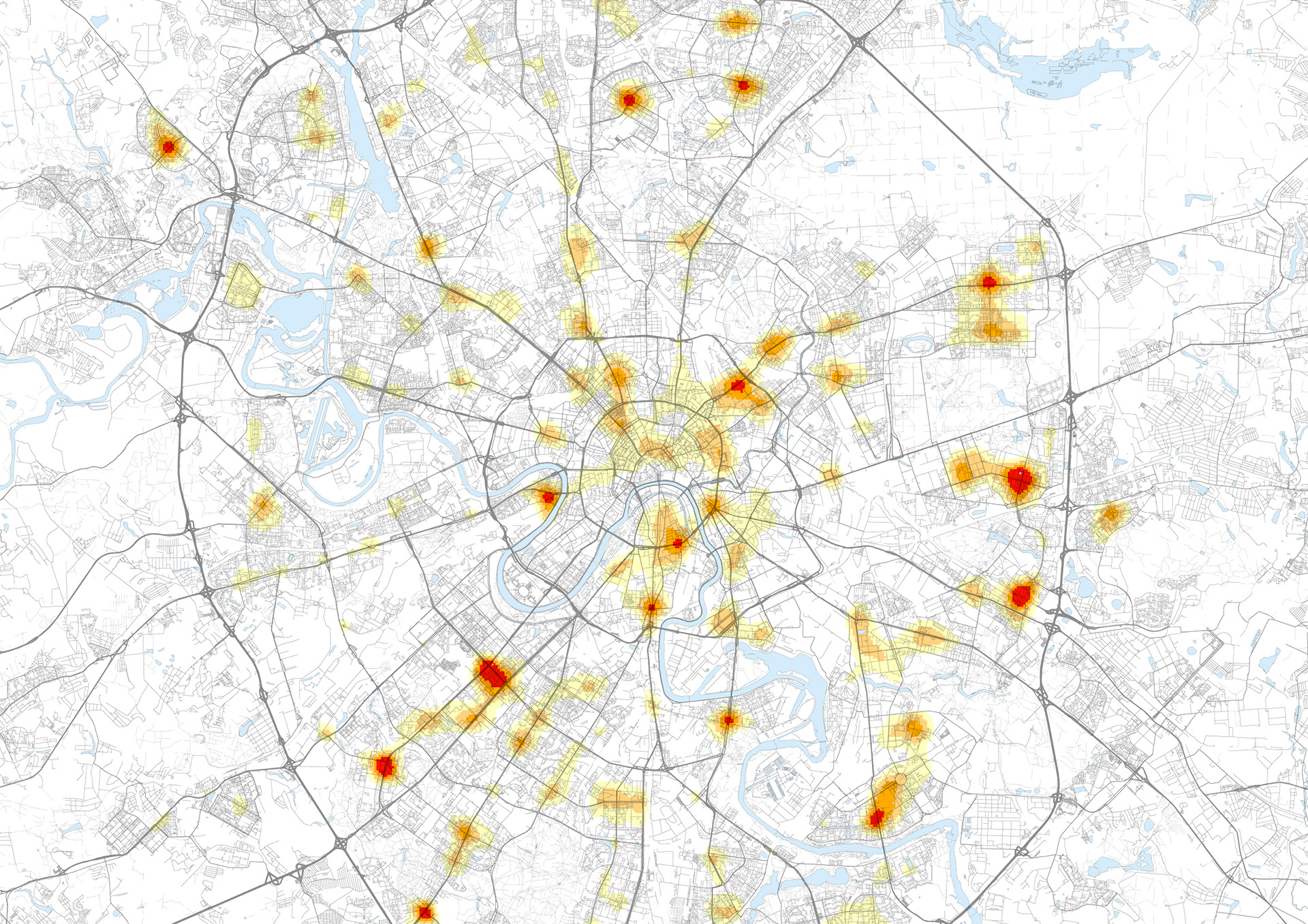Moscow Stories episode 2
Moscow

The Moscow Pedestrian and Bicycle Master Plan 2020. This is the second episode of a series of 4 of our Moscow stories. In this episode we are going to present the contribution MIC and Rosinak & Partner gave to the creation of the first plan in Moscow entirely focused on promoting active modes of transport: the Pedestrian and Bicycle Master Plan 2020.
The Department of Transport realized that developing a strong, comprehensive city-wide plan was vital to the successful transformation of Moscow into a pedestrian- and cycle-friendly metropolis. Many actions were already taken in the past years, such as the pedestrianization of dozens of streets in the city centre and the realization of scattered stretches of cycle paths, but only delivering high standard, diffused improvements would make the real breakthrough.
The Plan has the dual purpose of defining an overarching strategic vision and coordinating actual policies and interventions during the 2015-2020 period. It also provides the city government with an example of how to establish a decision-making process on the basis of data analysis and objective evaluations. The Traffic Control Center and MosgortransNiiproyect were also involved in the planning process, and Mobility in Chain led the project team while Rosinak & Partner developed the network and strategies for cycling.
Goals and Approach
The PBMP aims at realizing and improving infrastructure in the medium-short term, enabling the long-term modal shift from private motorized vehicles to sustainable alternatives. In Moscow as in all cities worldwide, in fact, many car trips cover distances that could potentially be cycled, and even more trips could become sustainable by combining public transport and walking. But when choosing the mode of transport for a trip, we always value convenience, travel time, safety and comfort and much has to be done for making cycling and walking as attractive as driving or as common as taking the metro. This is especially true in Moscow, where the climate is harsh and the streets often noisy and hostile. Safety, connectivity, urban quality and sustainability consequently became the PBMP’s goals.
Location
Moscow
Client
Moscow Stories episode 2
Main expertise
Movement Analysis; R&D
PROJECT HIGHLIGHTS
- Authors: Federico Parolotto, Valentina Giacomelli
- By elaborating and combining the most meaningful datasets, a Strategic Pedestrian Index (SPI) was created, highlighting the most significant areas and neighborhoods from the standpoint of pedestrian activity, potential and criticalities.
- The highest SPI’s are found outside the Garden Ring, proving how peripheries are worthy of attention. Also, pedestrian relevance in Moscow does not necessarily correlate with one specific urban typology, since high SPI’s are found in very different contexts and urban areas.
Project gallery
Our contribution
By looking at the population density and at the distribution of facilities and attractors we immediately realized that intervening in the periphery was crucial. Despite that, the White City project allowed us to experience how, even in the very core of Moscow, pedestrians’ basic needs for quality and connectivity were neglected in favor of the maximum vehicular accessibility. Moreover, the number of pedestrians involved in accidents demonstrated that safety definitely was a priority concern.
We extensively used GIS based analysis and elaborations in order to obtain an overall understanding of the city and identify the priority areas for detailed analysis and interventions. The most relevant areas for walking were then studied in detail through site visits, analysis of the pedestrian network, photo-report and checklists. This resulted in a detailed dataset which allowed the identification of the most pressing critical issues, addressed in the strategies and recommendations package.
Associations and activists were involved in the process as well, especially for helping us understand how to better realize the city’s cycling potential. This led to the definition of a strategic cycle network for both utilitarian and leisure purposes: it runs along all major urban axes linking all the city rayons and it also connects riverfronts and green areas.
First results
The first study outcomes were presented at the Moscow Urban Forum 2014, together with a promotional video that raised interested and positive reactions.
At the end of 2014, the Moscow Government launched a new initiative, the “My Street 2015-2018” program. It schedules the refurbishment of more than 3000 streets in Moscow, and it works as an implementation tool for the creation of the planned cycle network and for the general improvement of streets’ safety and design.
Works have started already in some areas: 44 streets were refurbished in 2015, including part of the Boulevard Ring, for a total of more than 100km; most of the interventions also involved the improvement of the transport scheme, meaning for instance the reduction of traffic lanes in favor of public transport dedicated lanes. As for cycling, 20 km of cycle paths were built in 2015, bringing the total length of Moscow’s cycle network to 200 km.